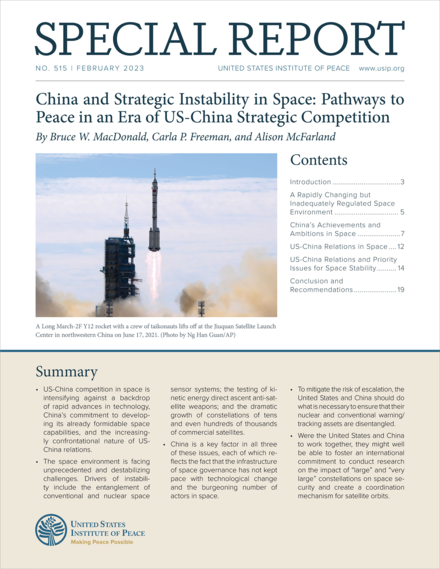Bruce W. MacDonald; Carla Freeman, Alison McFarland

Recent defense white papers published by the Chinese government refer to outer space as the “commanding heights” in international strategic competition, and the United States has explicitly identified space as a warfighting domain. While current strains in the US-China relationship have made managing potential conflict in space difficult, it is not impossible. This report identifies several areas in which the United States and China, as two of the world’s three most formidable space powers, urgently need to improve communication and manage differences.
SummaryUS-China competition in space is intensifying against a backdrop of rapid advances in technology, China’s commitment to developing its already formidable space capabilities, and the increasingly confrontational nature of US-China relations.
The space environment is facing unprecedented and destabilizing challenges. Drivers of instability include the entanglement of conventional and nuclear space sensor systems; the testing of kinetic energy direct ascent anti-satellite weapons; and the dramatic growth of constellations of tens and even hundreds of thousands of commercial satellites.
China is a key factor in all three of these issues, each of which reflects the fact that the infrastructure of space governance has not kept pace with technological change and the burgeoning number of actors in space.
To mitigate the risk of escalation, the United States and China should do what is necessary to ensure that their nuclear and conventional warning/tracking assets are disentangled.
Were the United States and China to work together, they might well be able to foster an international commitment to conduct research on the impact of “large” and “very large” constellations on space security and create a coordination mechanism for satellite orbits.
No comments:
Post a Comment